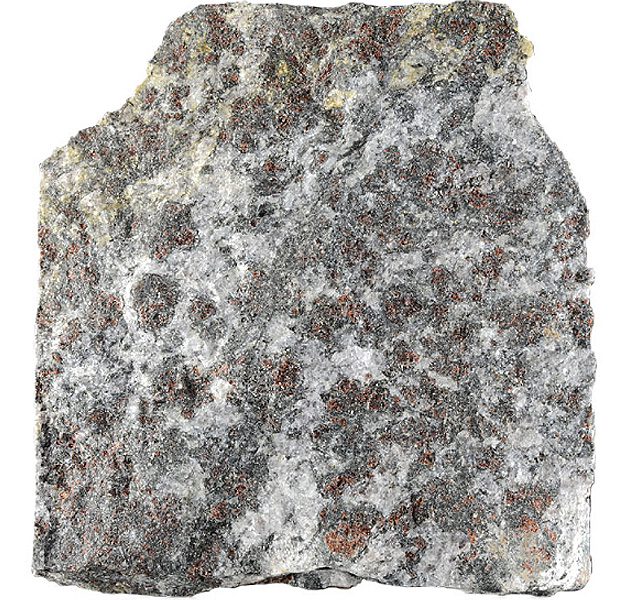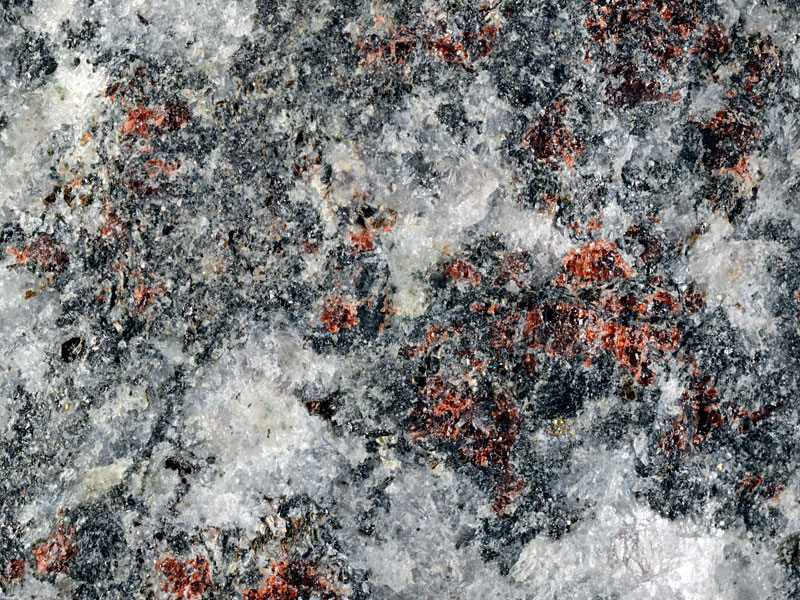
Fact sheet
This ancient Lewisian gneiss is a plagioclase-rich rock from Lingerabay on South Harris in the Western Isles of Scotland. The rock was probably originally intruded as an igneous rock, but has been metamorphosed by exposure to very high temperature (800 °C), and pressure during burial to at least 20 km during the Laxfordian orogeny in the Proterozoic period.
The rock contains some large grains of plagioclase (anorthite), although many have been reduced by later recrystallisation. Large inclusion poor garnet exhibits textures characteristic of both the prograde path (formed at the peak of metamorphism) and the retrograde path (reactions between minerals as they moved back towards the Earth’s surface). The reaction between the garnet and the surrounding minerals led to the formation of plagioclase and pyroxene (which later altered to amphibole) that now appear as rings surrounding each of the garnets, a texture known as a corona.
The United Kingdom Virtual Microscope (UKVM) collection consists of igneous, sedimentary and metamorphic rocks from around the UK.
It is intended as a teaching resource, helping to tell the story of the common rock types and how they form, and reflecting the history of the UK at the margins of the continent of Europe. The collection is a series of teaching sets, for example igneous rocks from the North Atlantic Igneous Province and SW England; high-temperature metamorphic rocks from Scotland and low-temperature metamorphic rocks from Wales; and sedimentary rocks, including English limestones and sandstones.






